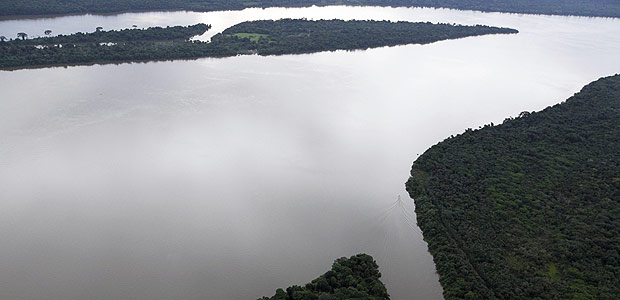Latest Photo Galleries
Brazilian Markets
17h36 Bovespa |
-0,07% | 124.646 |
16h43 Gold |
0,00% | 117 |
17h00 Dollar |
+0,29% | 5,1640 |
16h30 Euro |
+0,49% | 2,65250 |
ADVERTISING
The Amazon in the Past Was Flooded and even Had Sharks
05/04/2017 - 12h09
Advertising
RICARDO BONALUME NETO
FROM SÃO PAULO
During two periods in the past, parts of the Amazon region in Brazil and Colombia were temporarily covered by the sea. It wasn't very deep and was less salty that today's oceans, but the fauna even included sharks.
Although this may seem at first to be merely a scientific curiosity, it was vitally important for increasing the biodiversity of the region - the greatest on the planet.
A team of 16 researchers from eight countries published the discovery in the latest edition of the scientific magazine "Science Advances".
The two inundation events occurred during the geological age known as the Miocene, which lasted from 23 until 5.3 million years ago.
"The ramifications for our study are myriad. For example, scientists who study the evolution of the Amazon's flora and fauna can compare the diversification of a certain group of animals and plants with the inundation events that we described", explained Brazilian Carlos D'Apolito Júnior, from the Federal University of Mato Grosso, which participated in the study.
| Nacho Doce/Reuters | ||
 |
||
| An aerial view shows the Tapajos river in the Amazonia National Park in Itaituba, state of Para |
Today, around 80% of the Amazon is covered by forests on solid land and 20% consists of flooded regions. The team examined sediment from cores obtained in the Llanos - Colombia, and Amazonas/Solimões - Brazil basins.
Among the evidence that supports that there were inundations in the past are the geochemical data of sediments extracted from deep cores, not only from surface outcroppings, seismic data, microfossils and even two macrofossils - the tooth from a shark and a species of shrimp.
The team discovered that the environment that dominated the Amazon between the period of inundations was different from the modern environment.
It was a marginal environment, also referred to as the "Pebas Formation", a habitat that has no modern equivalent - a continental-scale area of wetlands with thousands of lakes and forest patches.
The majority of plants and animals that live in the Amazon today, say the authors, either evolved from this 'marginal environment' in the last 10 million years or migrated to the modern Amazon more recently.
Translated by LLOYD HARDER



